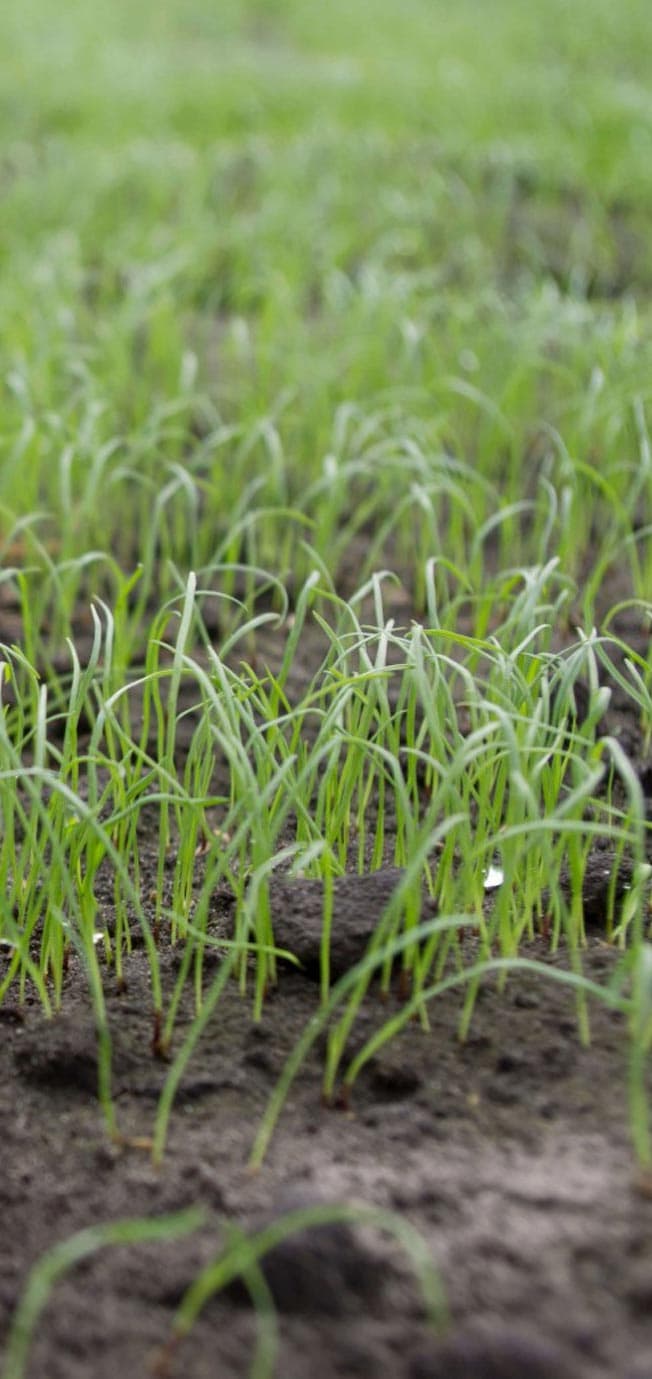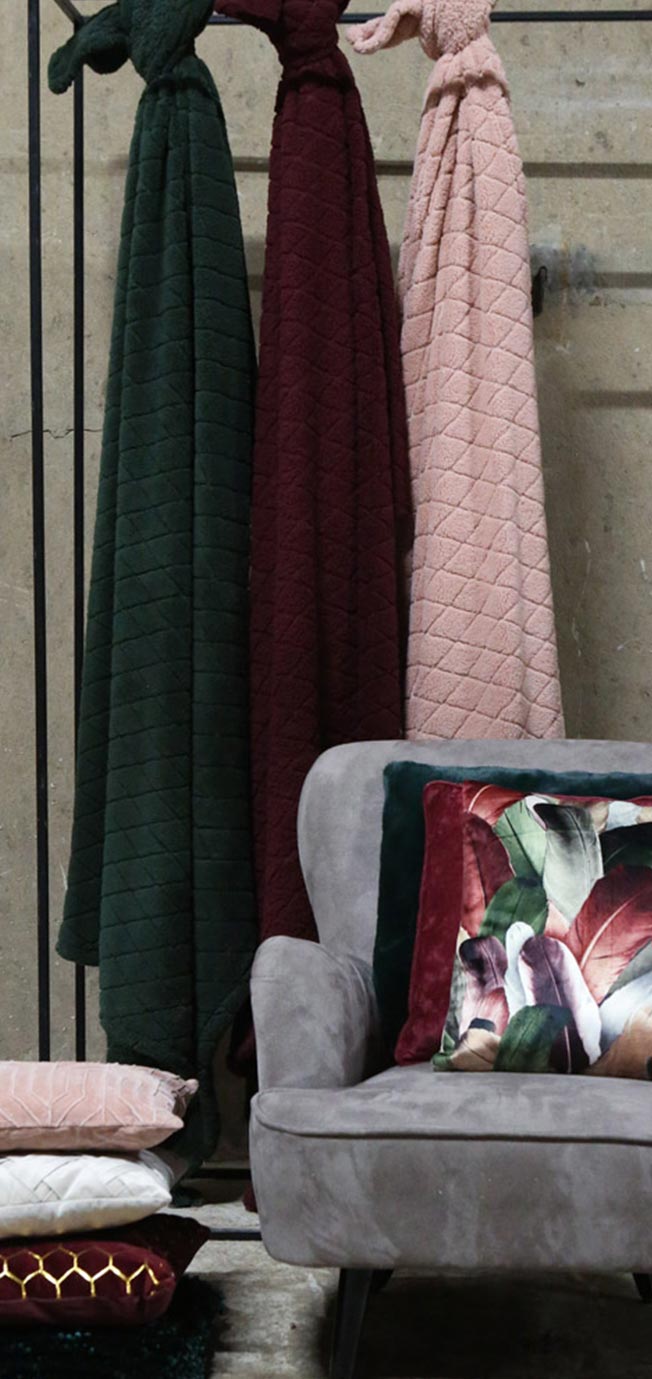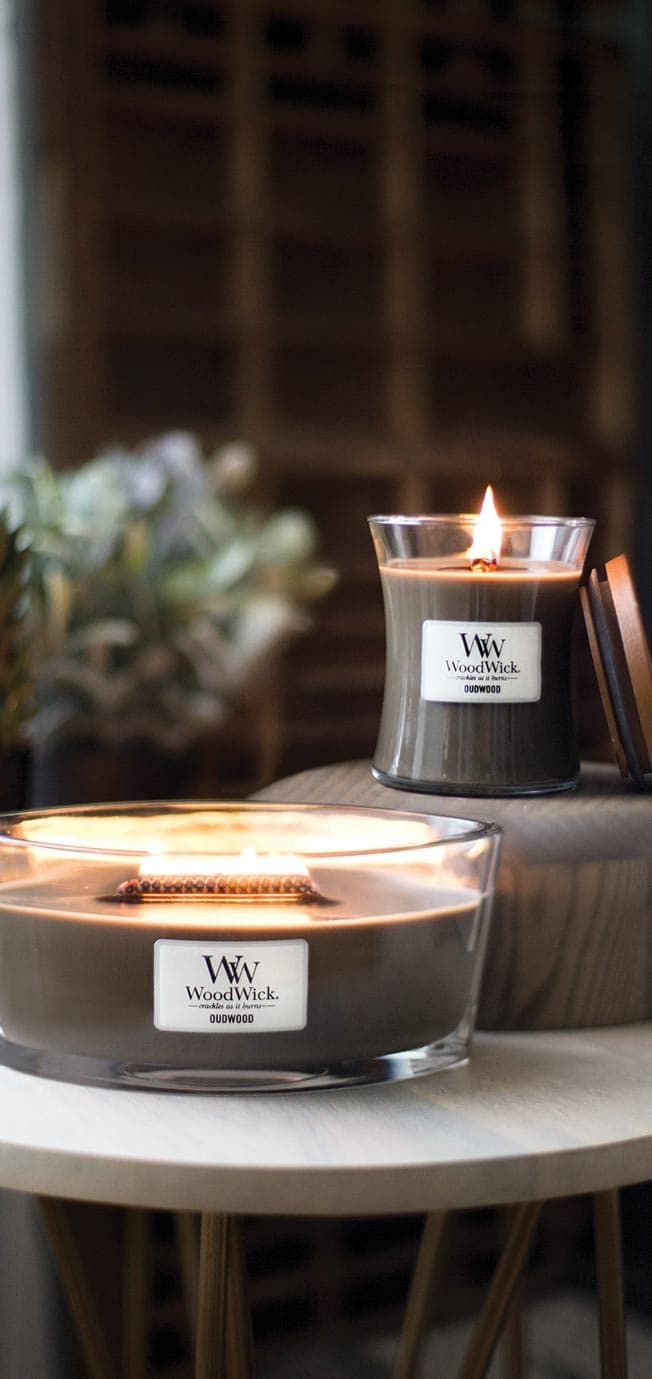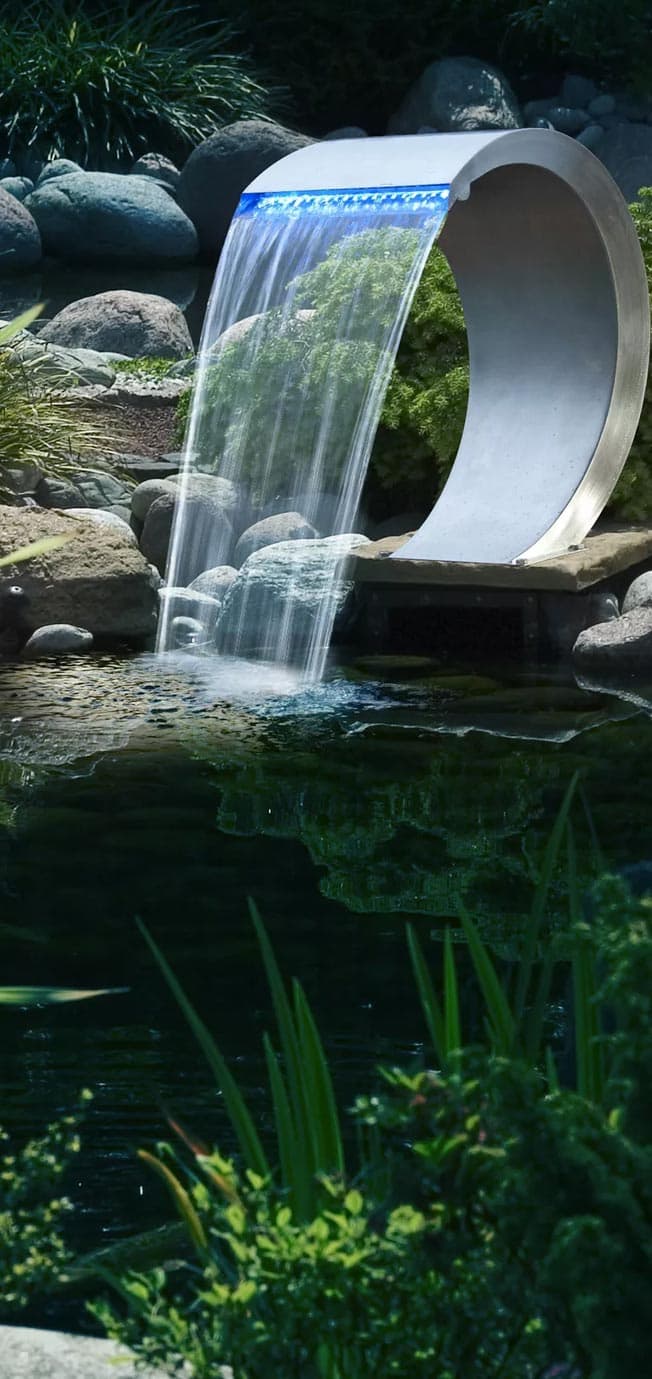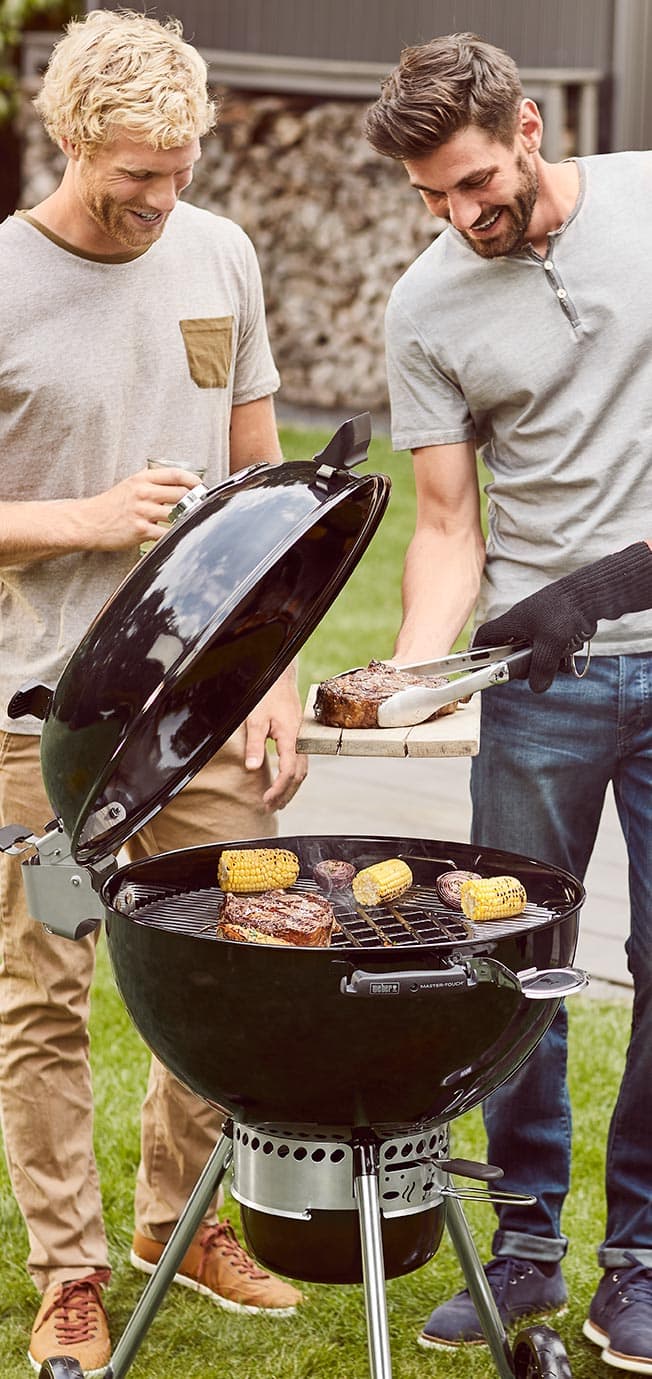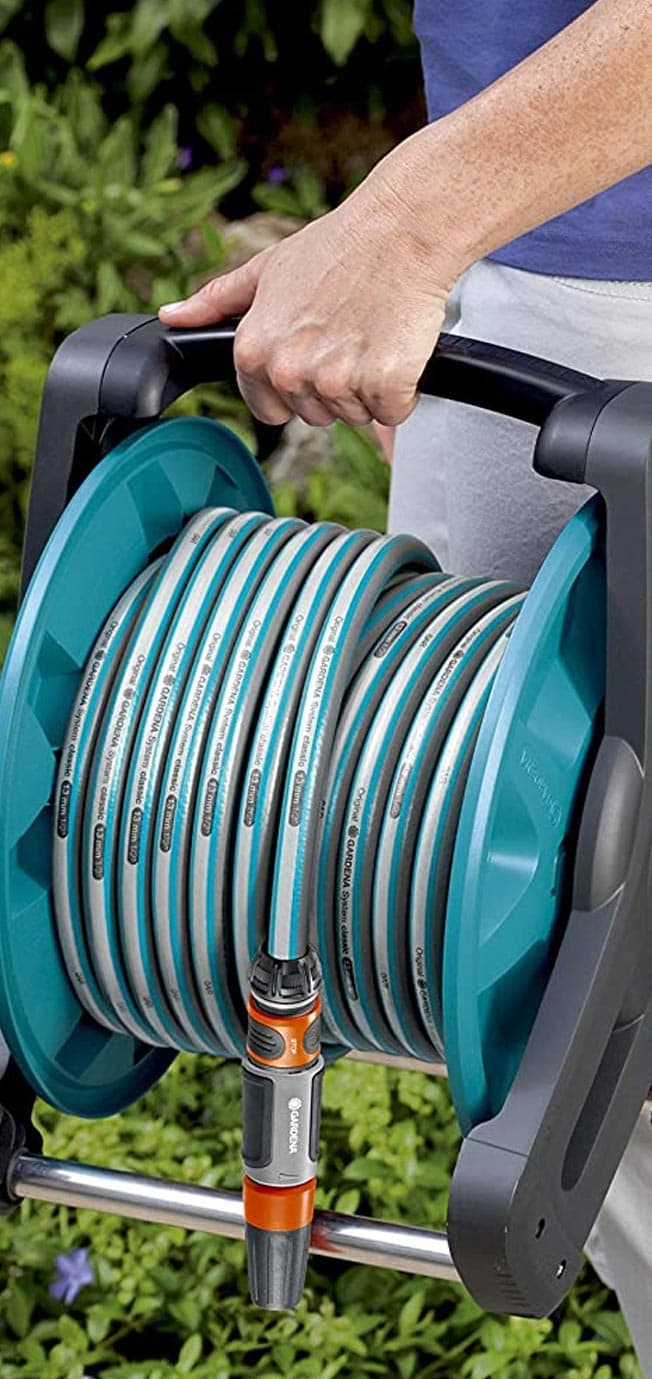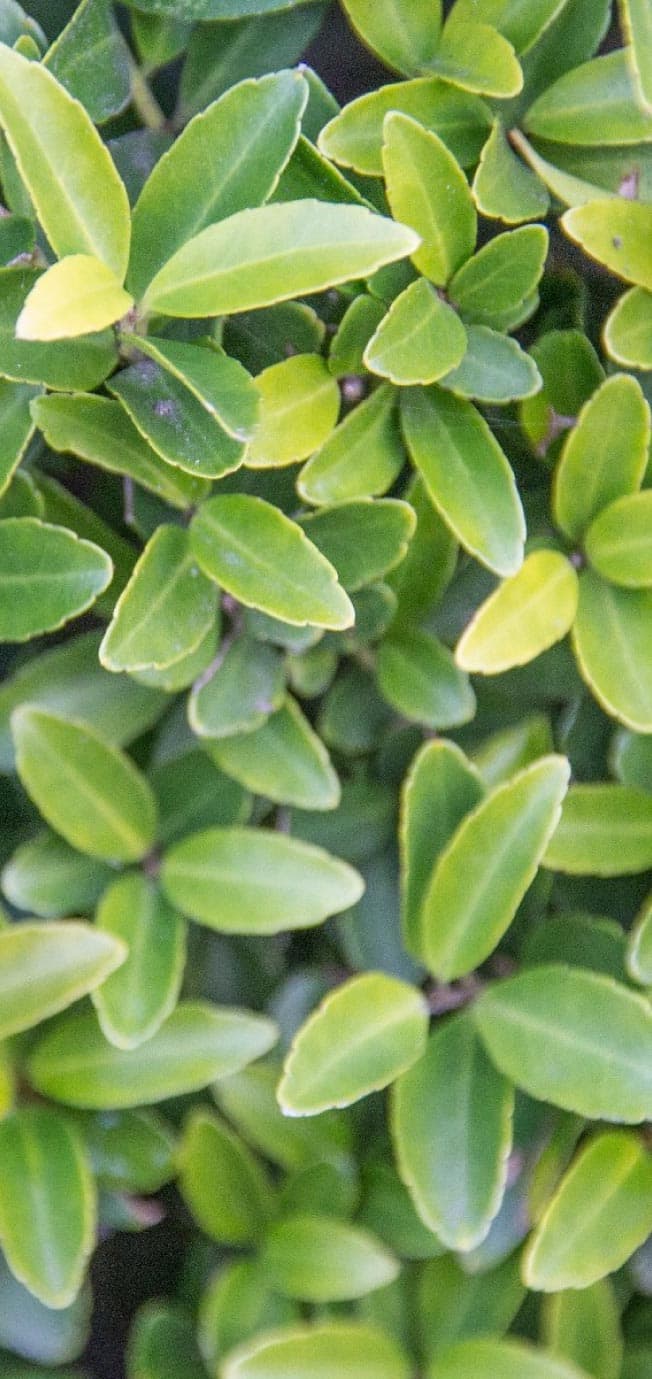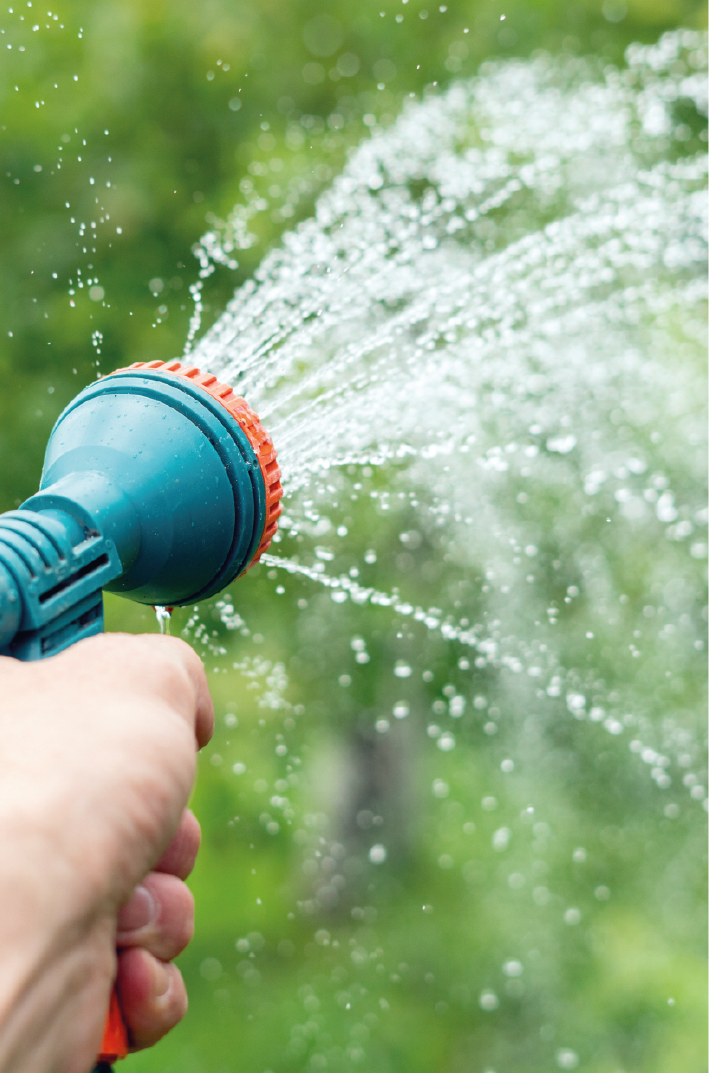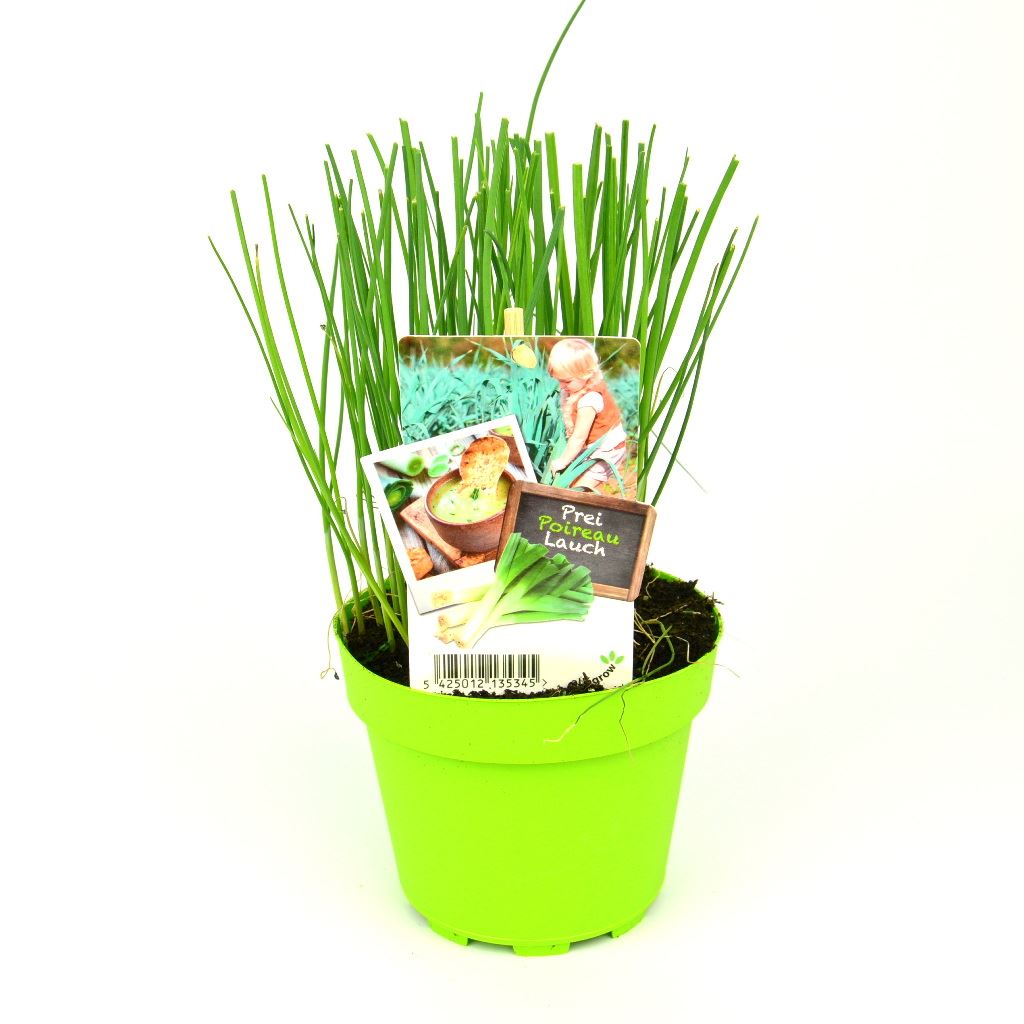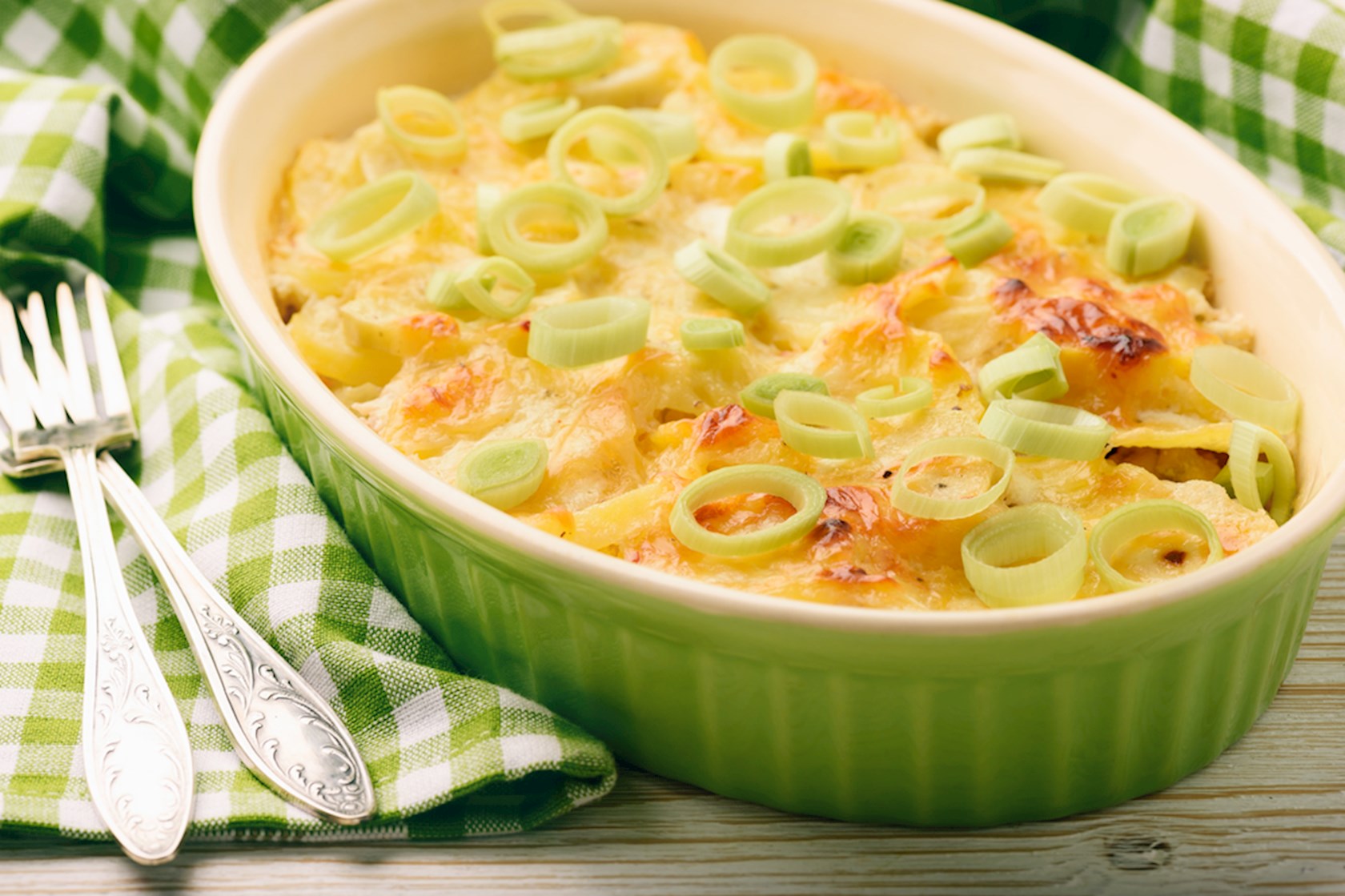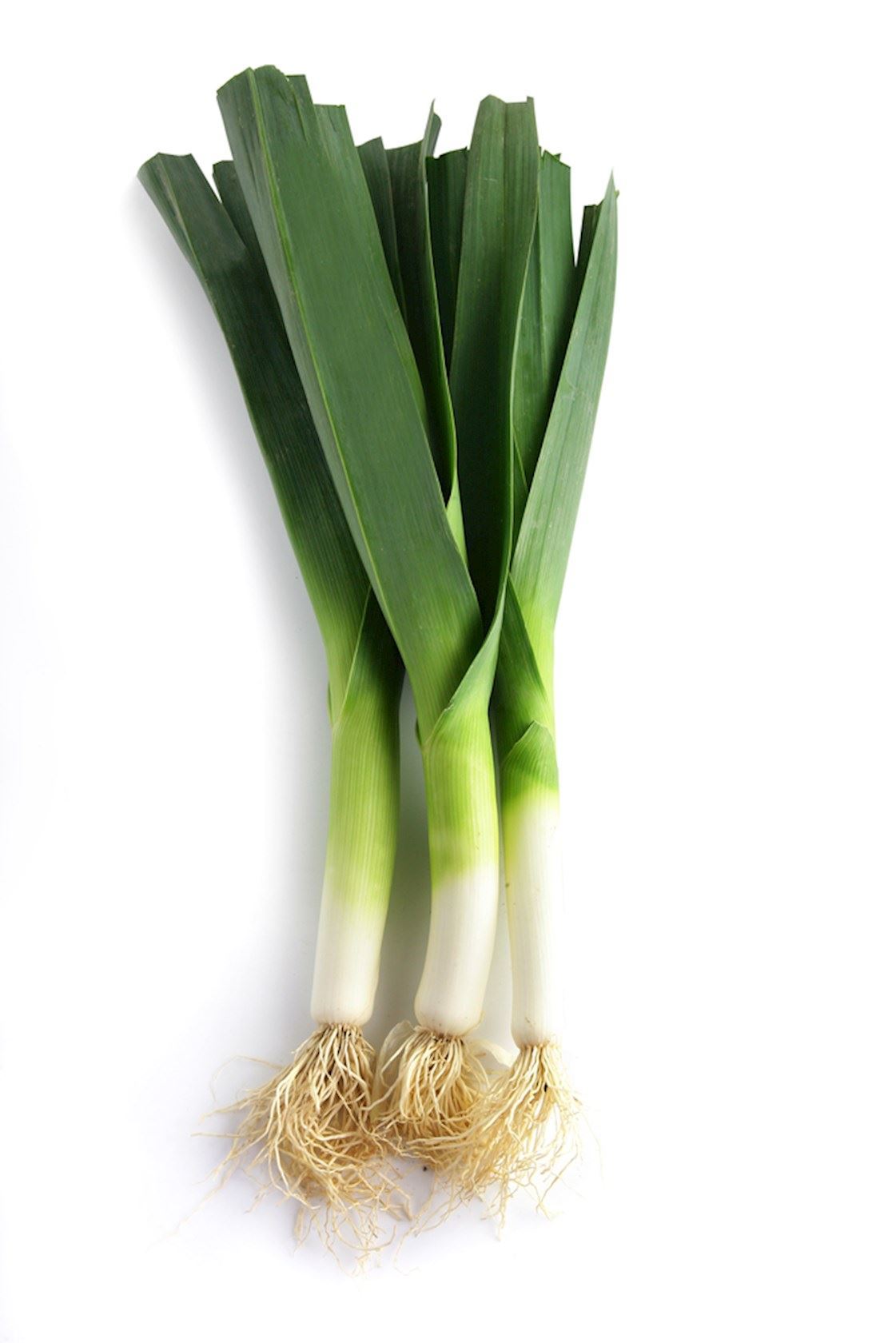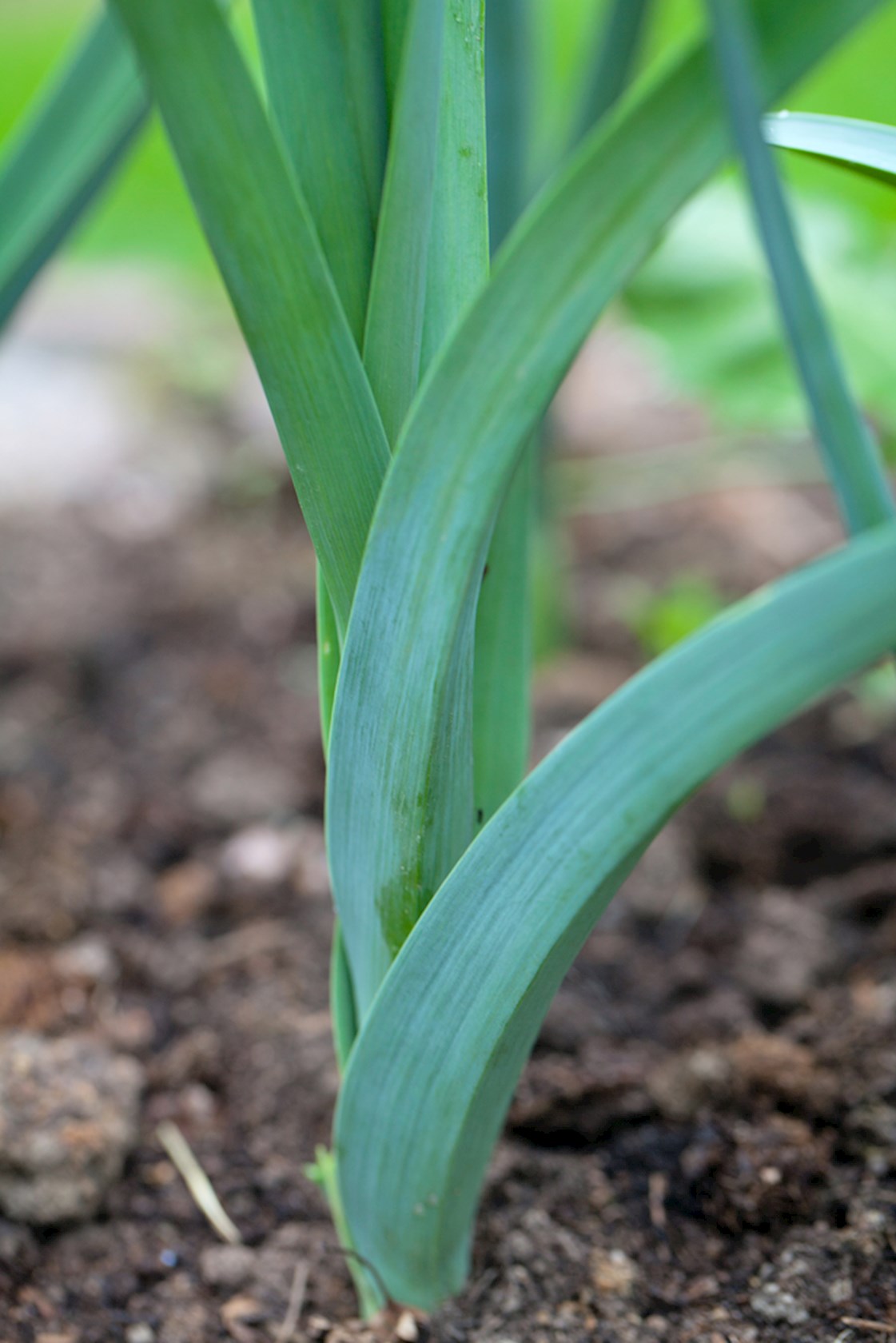Leek - pot ø13 cm - pot grown - +- 35 pieces
Zomerprei
Product information "Leek - pot ø13 cm - pot grown - +- 35 pieces"
Summer leeks are for sale from the end of March onwards and are cultivated mainly abroad (because of the warmer climate). The leek plants of Depraetere are grown in the south of Spain where temperatures in the spring fluctuate between 15 and 20 ° C and where the number of hours of sunshine is much greater than in our country. This gives you stronger, hardened plants that can be grown outdoors.
Leek is a plant of the garlic family and grows wild in the coastal areas of North Africa, Southern Europe and the Caucasus. The vegetable was already known in ancient times: Egyptians, Greeks and Romans were all leek growers. In Rome, the farms where leeks were grown were called porrineae. Emperor Nero was such a lover of leeks because he was convinced that it would raise his voice quality to a higher level. Now leeks are grown just about all over the world. The plant is composed of leaf sheaths folded over each other. As long as they are covered with soil, they form the white part of the leek.
CULTIVATION TIPS:
You may want to shorten the leaves of the leek plant a bit to have less evaporation for the period after planting. Plant the leek plants in a planting hole of ± 20 cm at a distance of 10-15 cm in the rows and 30-40 cm between the rows. Make sure that the heart of the plant is just above the ground. Immediately after planting, water the leek. You do not have to close the holes, the wind and weather will do this for you. Later in the cultivation you can plant some more leeks to get longer white shafts.
HARVEST AND STORAGE:
Leeks can be harvested as needed. At the end of the season you harvest what is left and this is perfect for freezing. Be careful because the packets of leeks in your freezer give off their typical leek scent to other products in your freezer. If necessary, use a double bag.
PROBLEMS AND DISEASES:
Because onion, shallot and garlic also belong to the genus Allium, a good fruit rotation is very important (1 to 4!) To bring a leek healthy to the measurement is not so evident because there are still quite a few attackers on finches. A common fungal disease in leeks is rust, small orange-brown spore clusters. Although this fungus usually only affects the green parts of the leek, a treatment may still be appropriate. Paper spot disease is also a regular problem. Feel free to contact us with any questions or problems
As far as insects are concerned, you get the most or the easiest visit from thrips, leek fly and onion fly. You can recognize thrips infestation by the fine silvery stripes on the leaves. Again, the damage is quite minimal, only the green part looks a little less beautiful. In autumn the pressure of thrips will decrease considerably. The caterpillar of the leek moth eats passages in the leaf with a preference for the heart leaves (the passages are wider than those of the leaf miner). In case of a serious infestation the plant dies completely. The onion fly maggot mainly affects the base of the plant, causing the leaves to turn yellow at first before dying off later. If you want to grow leeks organically, we can recommend the pheromones and pheromone traps against the leek moth (also available from us).
Feel free to contact us with any questions or problems.
Product specifications
| Application / use plant: | Unknown - n/a |
|---|---|
| Bloom Month: | Unknown - n/a |
| Bloom color: | Unknown - N/A |
| Branches / bark: | Unknown - n/a |
| Dutch plant name: | Zomerprei |
| English plant name: | Leek, Porret |
| French plant name: | Poireau, Porreau |
| Frost hardiness - details: | Very good (-29 till -23°c), usda zone 5 |
| Frost resistance: | Extrême winter hardiness |
| Fruit: | Unknown - n/a |
| Full grown plant height: | 40-60 cm |
| German plant name: | Lauch, Lauch / Porree, Porré, Porree |
| Growth habit : | Unknown - n/a |
| Growth habit - details: | Rising |
| Humidity/Soil: | Normal soil |
| Latin plant family: | Amaryllidaceae |
| Leaf / Foliage: | Unknown - n/a |
| Leaf / foliage - details: | Greygreen |
| Location: | Halfshadow, Full sun |
| Location - details: | Sun till half-shade |
| Minimum growing height (in cm): | 50 |
| Plant characteristic: | Edible (fruit, leaf, flower) |
| Plant family: | Daffodil family |
| Synonym / Trade name: | Allium ampeloprasum var. porrum |
| Winter foliage: | Losing leaf |
| maximal growth height (in cm): | 75 |
| type of crop: | Vegetables |
| type of soil: | Normal soil |
| type of soil / ground - details: | Any good garden soil |
Pictures of this plant
Reviews
Login

